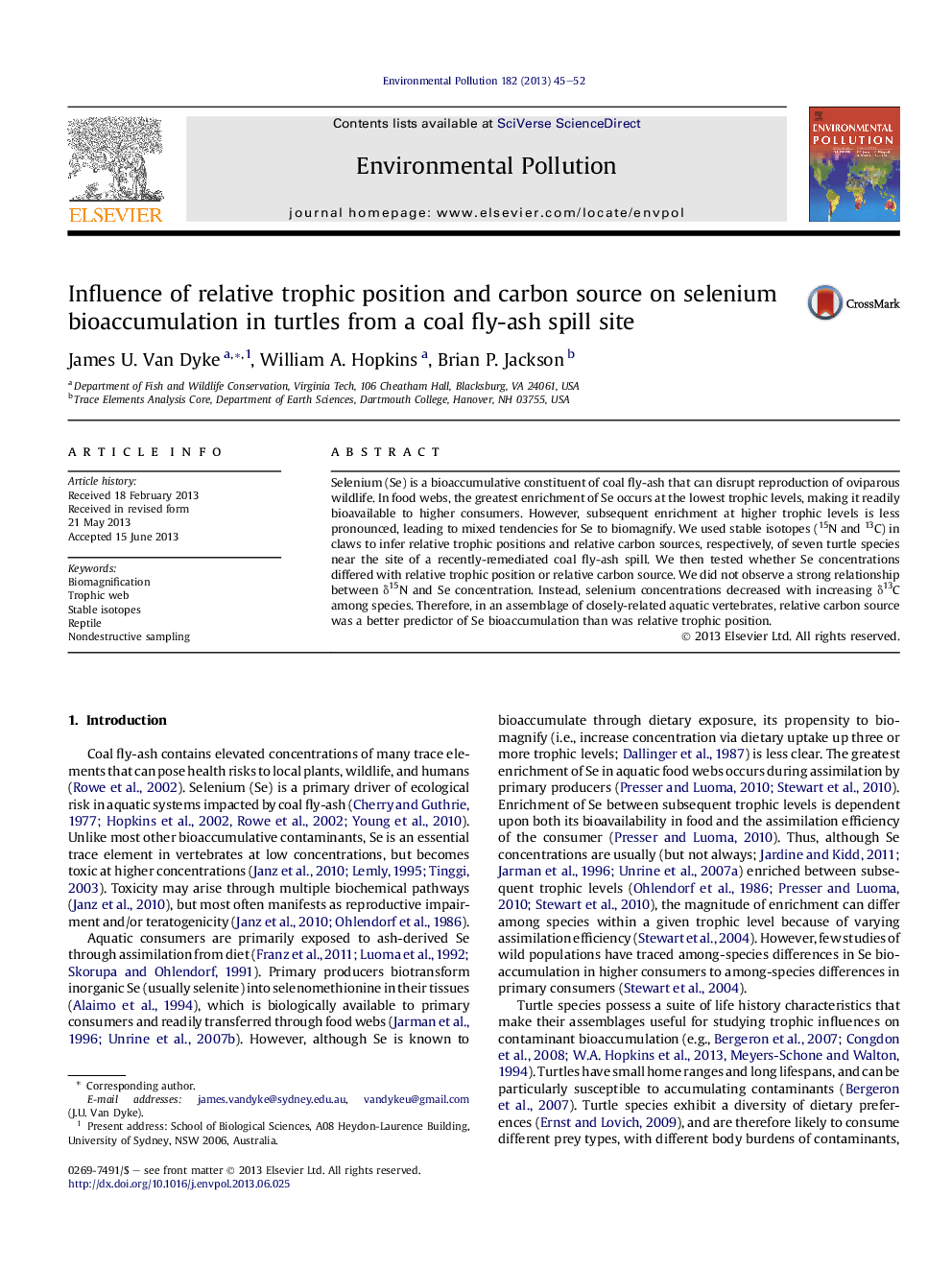| Article ID | Journal | Published Year | Pages | File Type |
|---|---|---|---|---|
| 6317019 | Environmental Pollution | 2013 | 8 Pages |
Abstract
Selenium (Se) is a bioaccumulative constituent of coal fly-ash that can disrupt reproduction of oviparous wildlife. In food webs, the greatest enrichment of Se occurs at the lowest trophic levels, making it readily bioavailable to higher consumers. However, subsequent enrichment at higher trophic levels is less pronounced, leading to mixed tendencies for Se to biomagnify. We used stable isotopes (15N and 13C) in claws to infer relative trophic positions and relative carbon sources, respectively, of seven turtle species near the site of a recently-remediated coal fly-ash spill. We then tested whether Se concentrations differed with relative trophic position or relative carbon source. We did not observe a strong relationship between δ15N and Se concentration. Instead, selenium concentrations decreased with increasing δ13C among species. Therefore, in an assemblage of closely-related aquatic vertebrates, relative carbon source was a better predictor of Se bioaccumulation than was relative trophic position.
Related Topics
Life Sciences
Environmental Science
Environmental Chemistry
Authors
James U. Van Dyke, William A. Hopkins, Brian P. Jackson,
